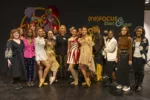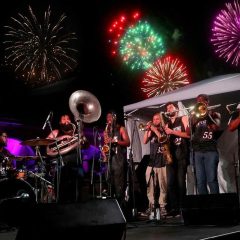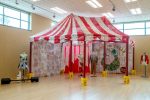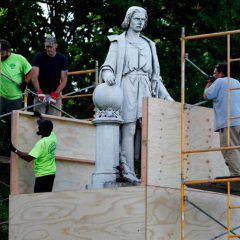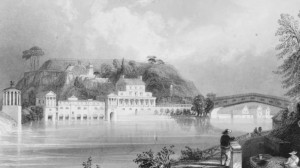
As one of the nine projects that will revitalize lost parts of Philadelphia for the 2013 Hidden City Festival, Camp Little Hope arts collective will take over part of the Kelly Natatorium in Fairmount Park to create a “Bibotorium,” or educational saloon, in a forgotten former public pool. For the length of the festival, which runs from May 23rd to June 30th, guests will be invited to sit down for a cup of tea and then to ruminate on the possibly terrifying future of our access to viable, fresh drinking water.
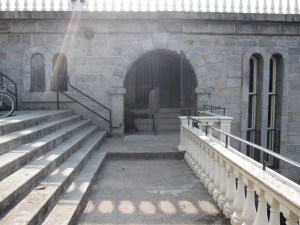
The Bibotorium site is steeped in Philadelphia’s historical relationship with water
On the banks of the Schuylkill River, where Fairmount Park meets the Philadelphia Museum of Art, visitors will access the Bibotorium via a stone staircase down to the Kelly Natatorium Water Works. The area was submerged when the Schuylkill rose after Hurricane Irene two years ago.
This transformation makes the site all the more appropriate for Camp Little Hope’s project, as the imminent rise of ocean waters worldwide and the alternate potential futures of drinking water for human consumption are the focus of the Bibotorium.
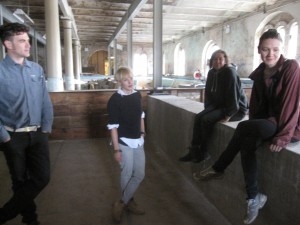
The Camp Little Hope team has picked a location with a great deal of history. Philadelphia built the first American municipal water system after the yellow fever broke out in 1793. In 1815, the Water Works were opened using steam engines to bring Schuylkill River water into reservoirs on the hill where the Philadelphia Museum of Art now stands. In 1909, the Water Works shut down as the Schuylkill had become too polluted to use for drinking water. The site was then replaced by a popular aquarium, which at the time was the fourth largest in the world. In 1961, a section of the site was converted into a swimming pool. After flooding during Hurricane Agnes in 1972, the Kelly Water Works was closed for good. The location is still home to the Fairmount Water Works Interpretive Center, which shares the history of drinking water in Philadelphia. The difference is that the Interpretive Center is a place where visitors read and learn about history, while the Bibotorium is a social experiment using conceptual art to educate people about their environment.
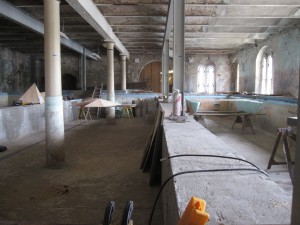
Camp Little Hope grapples with potential futures of water access
In the three sections of the Bibotorium, artists will be prototyping three boats that filter water in a different way based upon hypothetical shortages caused by aging infrastructure, pollution, or climate change respectively.
By walking down one of three sets of stairs to the saloon, visitors will enter a different exhibit focused on one potential future of drinking water. The goal is to foster an interactive experience for visitors as they dialogue with the artists and volunteers about environmental issues surrounding drinking water.

In one area of the Bibotorium, the artists said they will imagine a world where humans are living off of salt water because of melting glaciers and rising ocean levels. Some researchers believe that by the year 2100, Philadelphia’s 30th Street Station will be submerged by rising waters. In this future, drinking water is created by “desalinization” filters that make ocean water drinkable. In another area, drinking water has been irrevocably contaminated by industrial practices like hydro-fracking. In the third section, the technology needed to supply fresh drinking water has become so expensive that only corporations can afford to compete with one another for market share of humanity’s need for water. These concepts sound like sci-fi, but are based on the artists’ research into real possible futures for drinking water on Earth.
For more information about the Bibotorium at the Kelly Water Works, visit https://festival.hiddencityphila.org. All Hidden City Festival sites will be open Thursday through Sunday, noon to 7 p.m., for the length of the festival, from May 23 to June 30.


